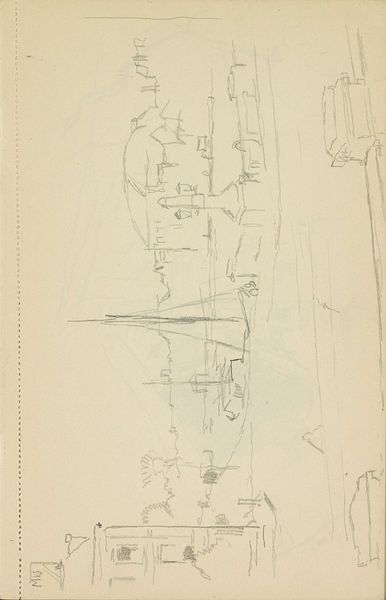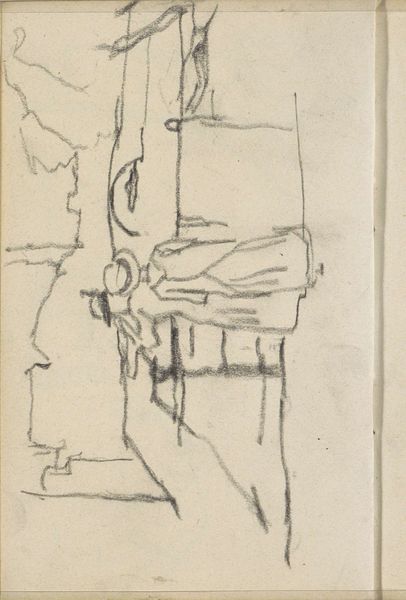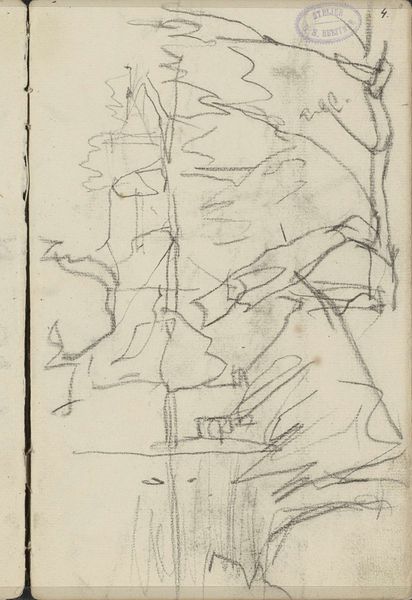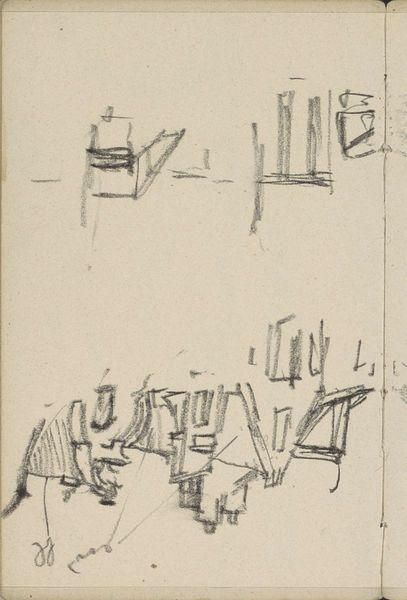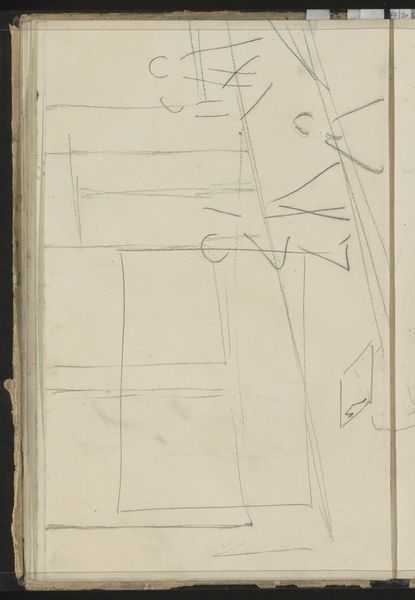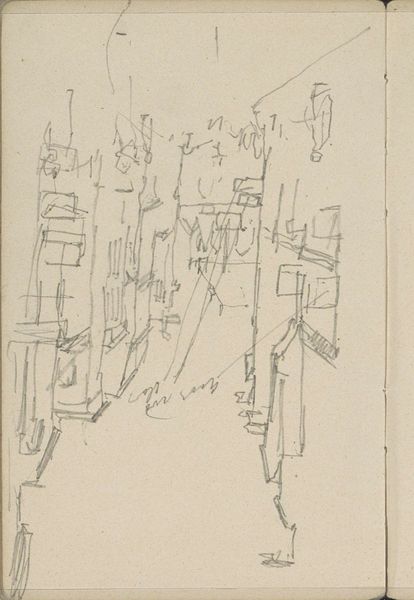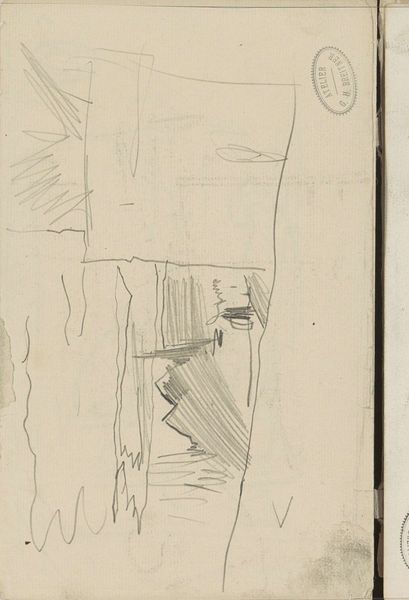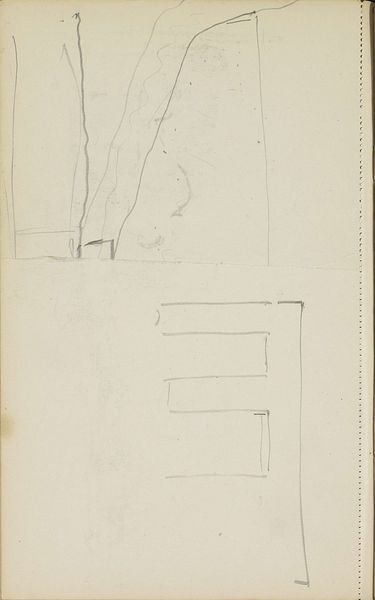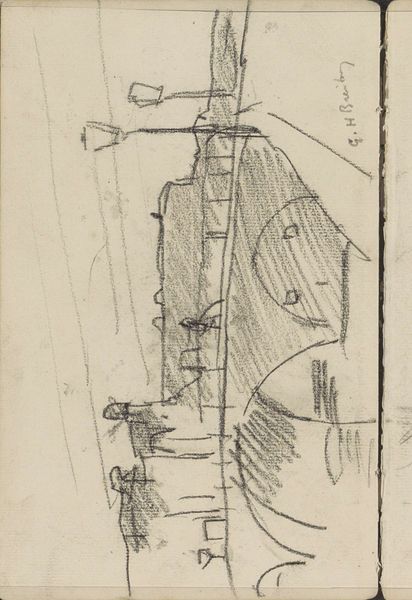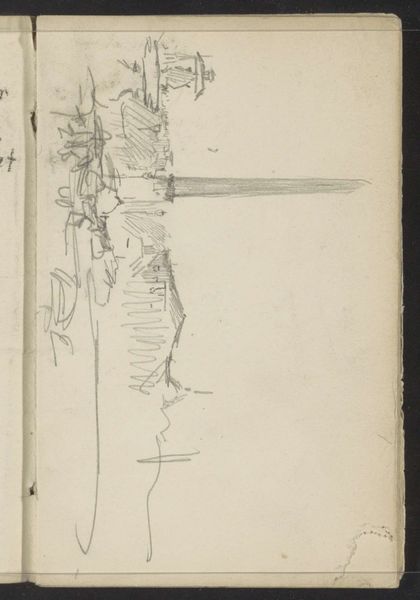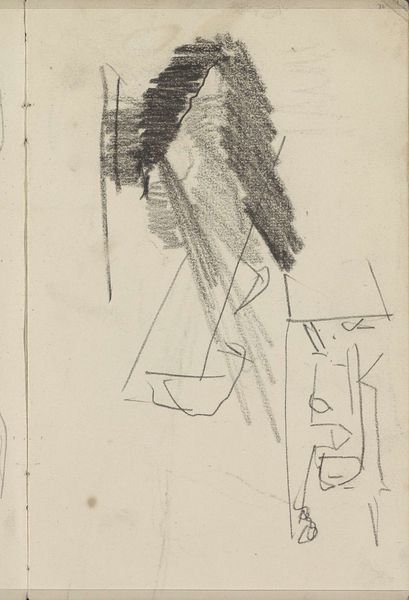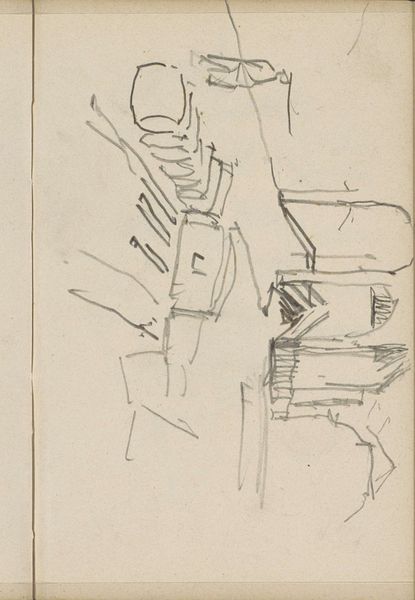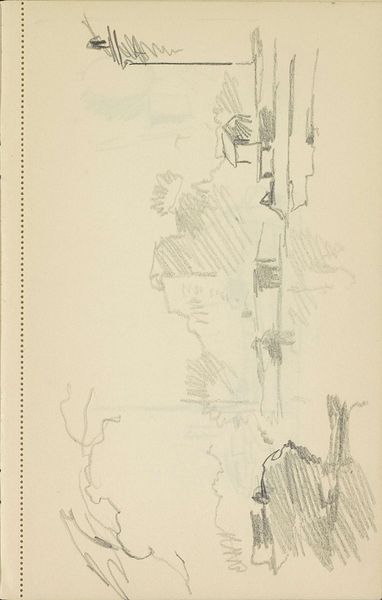
drawing, paper, pencil, architecture
#
drawing
#
etching
#
paper
#
pencil
#
abstraction
#
line
#
architecture
Copyright: Rijks Museum: Open Domain
Editor: This drawing, "Gebouw met een toren tussen de bomen" by Cornelis Vreedenburgh, dates from 1890 to 1946 and is done in pencil on paper. It feels very skeletal, just the bare bones of a building emerging from the landscape. What do you see in this piece? Curator: The immediate visual impact lies in the artist's economy of line. Notice how Vreedenburgh establishes form and space through a strategic application of linear elements. There is a definite tension between the implied volumes of the architecture and the looser, more organic lines representing the trees. How would you describe the spatial relationship between these elements? Editor: It’s like the building is almost fighting to break free from the trees. The lines of the architecture seem more defined, more forceful. Curator: Precisely. Consider, then, the deliberate contrast in line weight and density. The architectural structure is delineated with greater precision, suggesting stability, while the surrounding foliage appears more ephemeral, a network of lighter, fragmented strokes. The interplay creates a dynamic visual field. Do you notice the strategic emptiness of the sheet as well? Editor: Yes, there's so much empty space around the drawing. I guess it makes the building and trees feel isolated, almost floating. Curator: Exactly. This careful orchestration of positive and negative space accentuates the core subject matter. Furthermore, let's examine the orientation of lines. Are there specific patterns or directions that dictate the rhythm? Editor: It looks like the lines of the buildings are mostly straight diagonals, and the lines of the trees are mostly irregular, almost curly. It almost doesn't make a cohesive image, though. Curator: It is not meant to, but the abstraction provides a study in conflicting elements. What have you noticed about this study? Editor: I guess I see now that this work has many interesting and challenging contrasts, especially in the use of lines to differentiate architecture and landscape. Curator: Indeed, understanding how line, space, and composition contribute to an artwork's essence allows us to deconstruct its visual language, moving beyond mere representational interpretation.
Comments
No comments
Be the first to comment and join the conversation on the ultimate creative platform.
